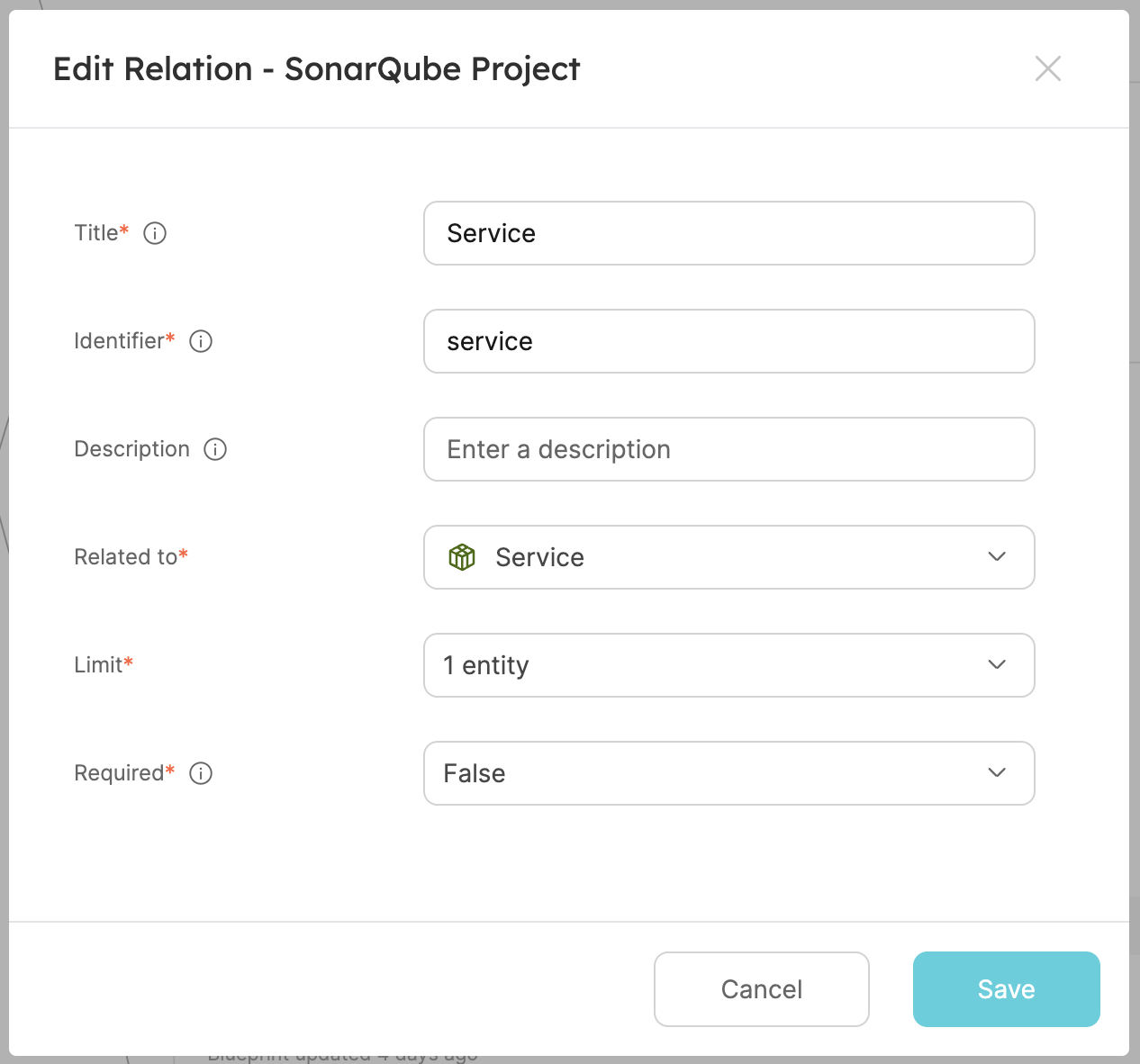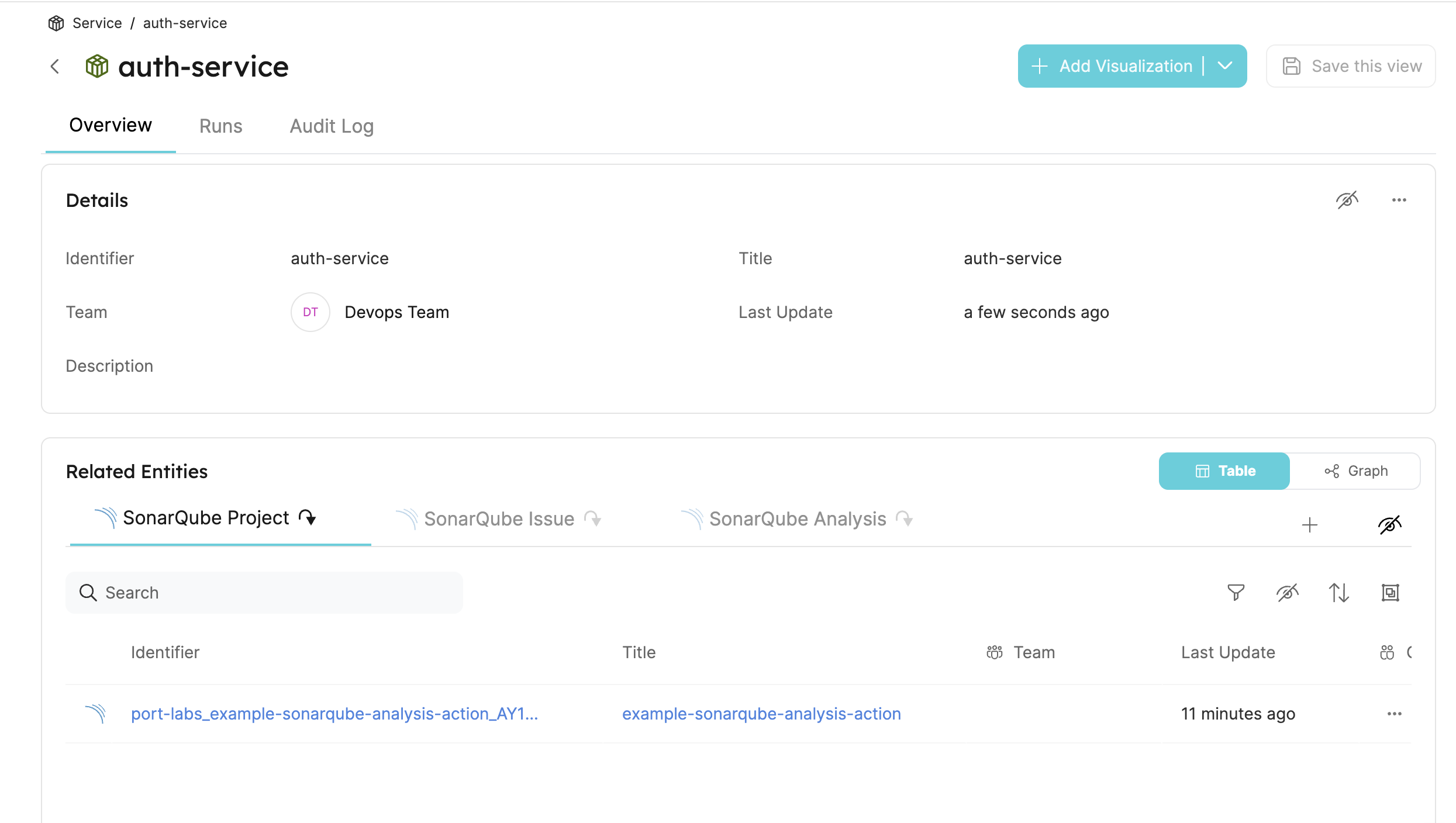Connect SonarQube project to service
This guide aims to demonstrate how to connect a SonarQube project to an existing service in Port.
- This guide assumes you have a Port account and that you have finished the onboarding process. We will use the
Serviceblueprint that was created during the onboarding process. - Ensure you have SonarQube ocean integration installed and configured in your environment.
- You will need an accessible k8s cluster. If you don't have one, here is how to quickly set-up a minikube cluster.
- Helm - required to install a relevant integration.
Add tags to projects in SonarQube
Tagging projects in SonarQube allows you to categorize and label your projects based on various attributes such as technology stack, business domain, team ownership etc. In this guide, we will add a tag attribute to tell us the name of the service that implements the project:
- Login to your SonarQube account
- Once logged in, navigate to the projects panel and choose the project you want to tag
- Within the project dashboard, locate the Project Information tab specific to the selected project
- Look for a section labeled Tags or similar. This is where you can manage tags associated with the project
- To add a new tag, click on the plus icon and type the tag name (
port-auth-service) into the input field provided. For this guide, let's assume there is a service entity identified byauth-servicein yourServiceblueprint in Port.

Since our SonarQube project may already have several tags, we will need a mechanism to control how these tags will be related to our Service blueprint. A way to achieve this relation is to prefix the tag name with the keyword port-. We will then use JQ to select the tags that starts with this keyword. So, our example tag will be named port-auth-service, which will correspond to a Service entity identified by auth-service in Port.
Create the service relation
Now that Port is synced with our SonarQube resources, let's reflect the SonarQube project in our services to display the projects used in a service. First, we will need to create a relation between our services and the corresponding Sonarqube project.

- Fill out the form like this, then click
Create:

Now that the blueprints are related, we need to assign the relevant SonarQube project to each of our services. This can be done by adding some mapping logic. Go to your data sources page, and click on your SonarQube integration:

Under the resources key, modify the mapping for the projects kind by using the following YAML block. Then click Save & Resync:
Relation mapping (click to expand)
- kind: projects
selector:
query: 'true'
port:
entity:
mappings:
identifier: .key
title: .name
blueprint: '"sonarQubeProject"'
properties:
organization: .organization
link: .__link
lastAnalysisStatus: .__branch.status.qualityGateStatus
lastAnalysisDate: .__branch.analysisDate
numberOfBugs: .__measures[]? | select(.metric == "bugs") | .value
numberOfCodeSmells: .__measures[]? | select(.metric == "code_smells") | .value
numberOfVulnerabilities: .__measures[]? | select(.metric == "vulnerabilities") | .value
numberOfHotSpots: .__measures[]? | select(.metric == "security_hotspots") | .value
numberOfDuplications: .__measures[]? | select(.metric == "duplicated_files") | .value
coverage: .__measures[]? | select(.metric == "coverage") | .value
mainBranch: .__branch.name
relations:
service: .tags | map(select(startswith("port"))) | map(sub("port-"; ""; "g")) | .[0]
The JQ below selects all tags that start with the keyword port. It then removes "port-" from each tag, leaving only the part that comes after it. It then selects the first match, which is equivalent to the service in Port.
service: .tags | map(select(startswith("port"))) | map(sub("port-"; ""; "g")) | .[0]
What we just did was map the SonarQube Project to the relation between it and our Services.
Now, if our Service identifier is equal to the SonarQube project tag, the service will automatically be linked to it 🎉

Conclusion
By following these steps, you can seamlessly connect a SonarQube project with an existing service blueprint in Port using project tags.
More relevant guides and examples: